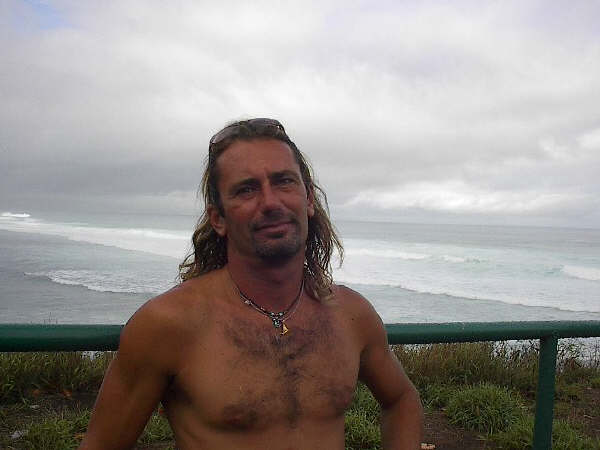That sums up yesterday morning and these two couple of shots of water photographer Jason Hall help reinforce the concept.
The other day I replaced the wetsuit compartment (sounds better than cardboard box) in my car and... I have way more than the 8 wetsuits I claimed I had. Didn't count them but it's more like 12, really...
Just think about this: the thicknesses that make sense for me in Hawaii are .5, 1, 1.5 and 2mm.
The styles are: tank (or no sleeve) top, short sleeve top, long sleeve top, no sleeve spring suit, short sleeve spring suit, long sleeve spring suit.
That is a total of 24 different combinations, so I actually don't have all that many...
The one I'm wearing in the photo below is a Xcel Drylock 2mm top and it's my favorite top.
The seams are sealed and until the first wipeout, I don't get a single drop of water in it. Very nice features when paddling out in these cold offshore mornings... what a blessings these last ones, btw!
It is extremely light and also when wet it stays lighter than my other 2mm tops because it doesn't absorb as much water. The constriction is pretty much inexistent and I have no extra material under my armpits (which is the reason I discard half of the tops I try).
The trick (as for any other wetsuit) is to buy one that fits you really tight. For this particular one, I picked a Small size, while I usually wear a Medium. It just fits me perfectly and even though I could use a cm or two of length more, it's still much warmer than a longer but less tight Medium.
We have a couple of Medium and a Large at Hi-Tech in Kahului, btw. If you go there and buy one because you read it here, please make sure to tell Tyler about it.
I'm not sponsored by Xcel (yet!), but I like their suits so much that I feel like recommending them.
My other two favorites are the 2mm Infinity spring suits (both short and long sleeve in size M).
Today's call is made easy by the wind. First the buoys though.
Below are the graphs of the NW and the Waimea ones. Notice how the NW went up like 3 feet in 6 hours just before midnight and it's not recording close to 10f. Now, if the direction of the swell was around 310, we could expect the same to happen to the Waimea one, roughy around the two arrows I added. But in this case we have no guarantee that it will happen like that.
Oh btw, when I say you have to click on the photo to appreciate the details, it's mostly so that you can read the latest reading up in the left top corner. Even though I know it's hard to do that on a mobile phone, I'm gonna leave that to you to figure out. Read this blog at home from the computer before you go surf, that's my suggestion...
Next buoy graph combo is: West Hawaii, Lanai and Pauwela.
As I repetitively affirmed yesterday, because of the swell direction, the Lanai buoy is getting hit in a much more direct way than the Pauwela: 4f vs 2f.
The W buoy is recording 6f 15s (it doesn't give the direction). and since we're kind of in the middle (latitude wise) between NW and W buoys, we can try to do an interpolation between those two readings to understand what's coming at us. Here's another map that shows the position of all the outer buoys.
Some inappropriate names there. N should be NE, W should be WSW, SW should be SSW, but I guess I'm too precise.

The wind map shows a couple of lovely fetches and the approaching of a front that, as usual, will have a important role on the local wind and conditions.

Here's the 5.30am satellite picture that shows the front over Oahu.
It might bring some rain with it, as the 6am radar image shows.
Yes because even though there might be more energy in the water in Kihei, the direction of the wind make the call easy as I was saying before: with the kona wind, you surf the north shore. Once it switches, then it's a completely different game, but I'll be at work... you guys enjoy the hunt and...

Have fun in the sun everyone!
PS. All the sources for this post are permanently linked in the links section on the right of this blog.















2 comments:
Hey ju)st wanted to give you some feedback.. I was surprised to see that waves were perfect glass all day in kihei until 3pm (right when I get off work Sadly. Although the waves were very small, was just surprised that there was zero wind almost all day
thanks for the feedback.
that surprises me too. I surfed there around noon and I know there was no wind. That is because the wind was transitioning between kona and NW and there have been several hours of calm. But I could totally detect some choppiness in the water left by the earlier kona wind. And if I check the iwindsurf graph of Kihei, I can see kona gusting up to 20 around 9am. So, when you say no wind all day, do you include the early morning too? That'll be surprising!
Post a Comment